what is sales intelligence? Importance, tools, features
These days, a customer wants to be sold exactly what they need, and they expect the people selling it to them to know exactly what they need, why they need it, and how they will benefit from it. The expectations are high and constantly evolving. This requires businesses to be proactive in understanding their customer base and their needs.
Sales intelligence helps sales teams to do just that by automating the prospecting process, gathering relevant insights about leads, and guiding their outreach. While sales intelligence has traditionally been viewed as a tool exclusively for sales teams, its value extends far beyond enabling just sales reps.
When leveraged across the entire organisation, sales intelligence can create a ripple effect that enhances collaboration, refines strategies, and aligns every department toward a unified goal: Revenue growth.
What is Sales Intelligence?
Sales intelligence involves the collection, analysis, and application of data to drive smarter decision-making within sales processes. It encompasses various types of data, such as customer behaviour, market trends, competitive analysis, buying signals, and so on. This data helps sales teams better understand prospects, predict sales trends, and ultimately close more deals.
However, this is only the beginning of what sales intelligence can achieve. To understand its full potential its important to understand what one can get from a sales intelligence tool and what kind of information are encompassed in sales intelligence.
The Role of Sales Intelligence in Sales:
The most obvious application of sales intelligence is in the sales process itself. It empowers sales teams to understand prospects, optimise strategies, and close deals more effectively.
Below, we’ll explore some of the most important metrics that sales intelligence tools offer and how each contributes to improving sales outcomes.
Customer Buying Signals
- Buying signals are behavioural indicators that show a prospect’s interest, such as how long your prospect spent on a content that you shared , downloading content, or engaging on social media.
- By identifying these signals, sales teams can time their outreach more effectively, targeting prospects when they’re most engaged, which can speed up the sales cycle and improve conversion rates.
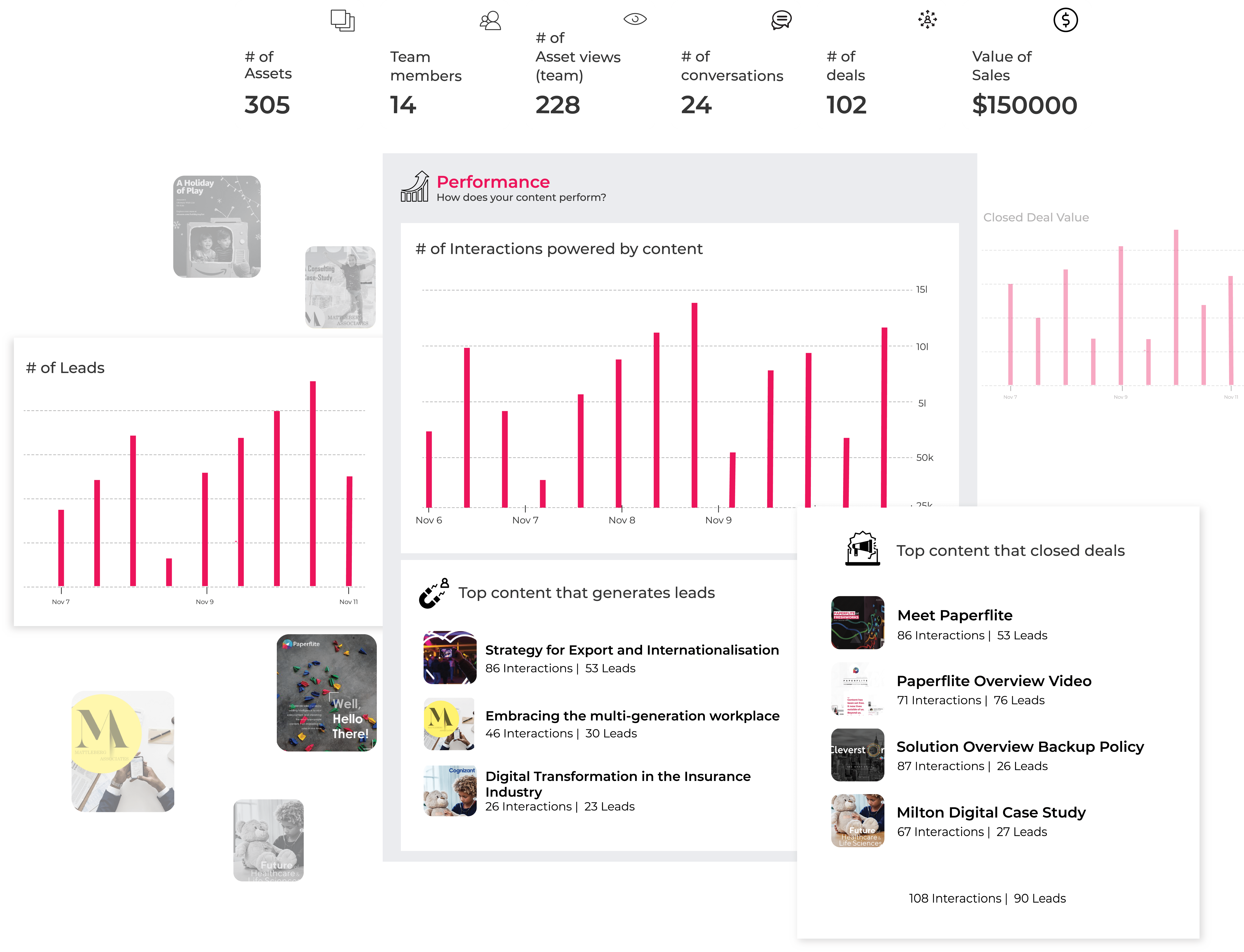
Engagement Metrics
- Engagement metrics track customer interactions with sales outreach, including email opens, click-through rates, and response rates.
- These metrics help sales teams gauge the effectiveness of their communication efforts. By understanding which messages resonate most, teams can refine their outreach to better engage prospects and drive conversions.
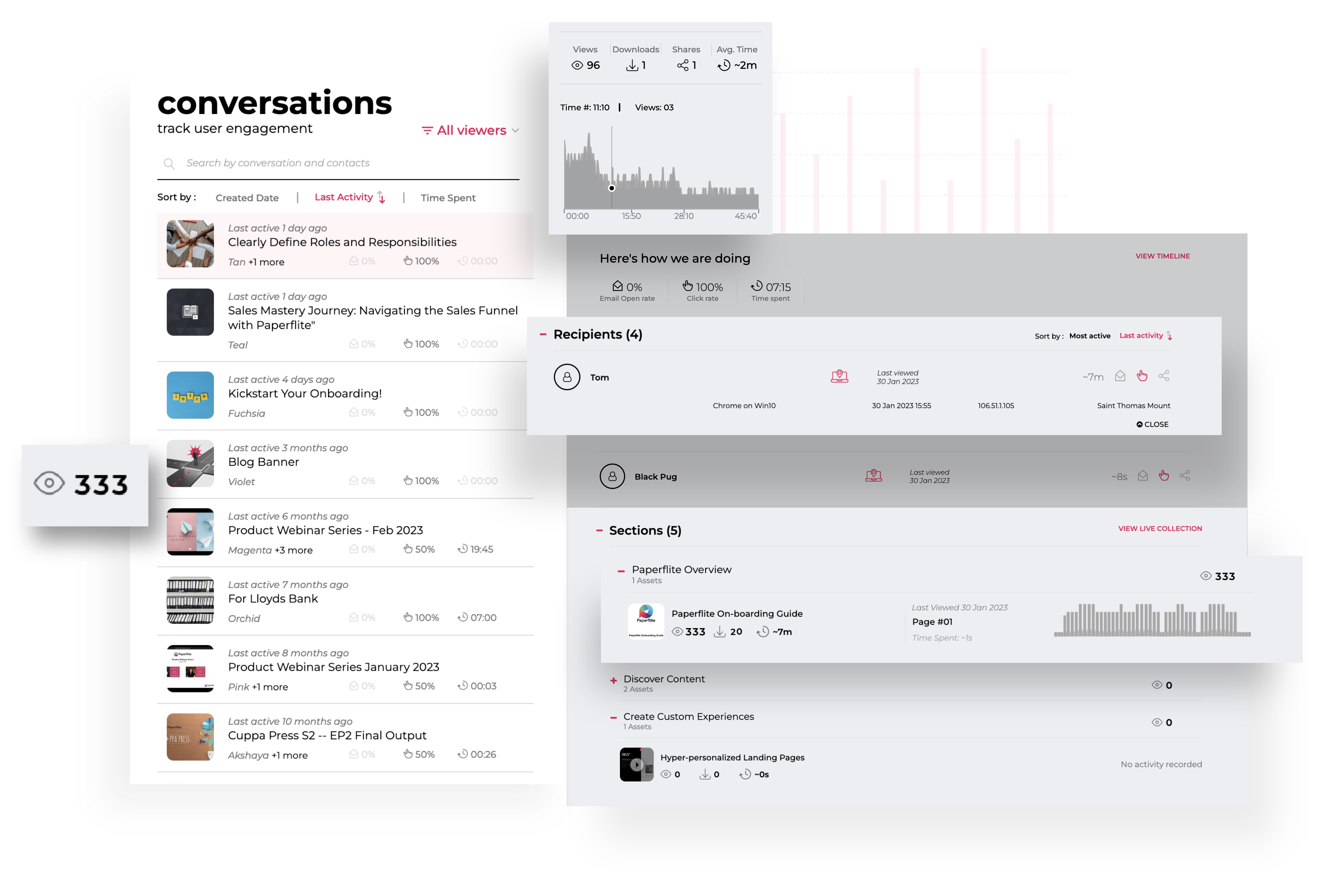
Lead Scoring
- Lead scoring assigns a numerical value to each lead based on criteria like engagement levels, content consumption rate, demographic fit, and behavioural patterns.
- It helps sales teams prioritise their efforts by focusing on high-scoring leads that are more likely to convert. This increases efficiency, reduces wasted time on unqualified leads, and improves the overall conversion rate.
Account Insights
- Account insights provide in-depth data on target accounts, including company financials, recent news, organisational structure, and key decision-makers.
- This metric allows sales reps to tailor their pitches based on the specific needs and pain points of each account, leading to more relevant conversations and improving the likelihood of closing deals.
Market Trends
- This metric tracks changes and trends in the broader market, including shifts in demand, industry growth, and evolving customer needs.
- Sales teams can adjust their strategies based on these trends, targeting emerging opportunities or adapting pitches to align with new market realities, which can increase relevance and competitiveness.
Sales Cycle Length
- This metric measures the time it takes to move a prospect through the sales funnel, from the initial contact to deal closure.
- Understanding the length of the sales cycle allows teams to identify bottlenecks and optimise processes, which can help shorten the time to close deals and increase revenue velocity.
Customer Churn Rate
- Churn rate measures the percentage of customers who stop doing business with a company over a set period.
- By understanding churn rates, sales teams can identify patterns that lead to customer attrition and take steps to improve retention efforts, leading to better customer loyalty and long-term revenue growth.
Tools that help with sales intelligence:
LinkedIn Sales Navigator
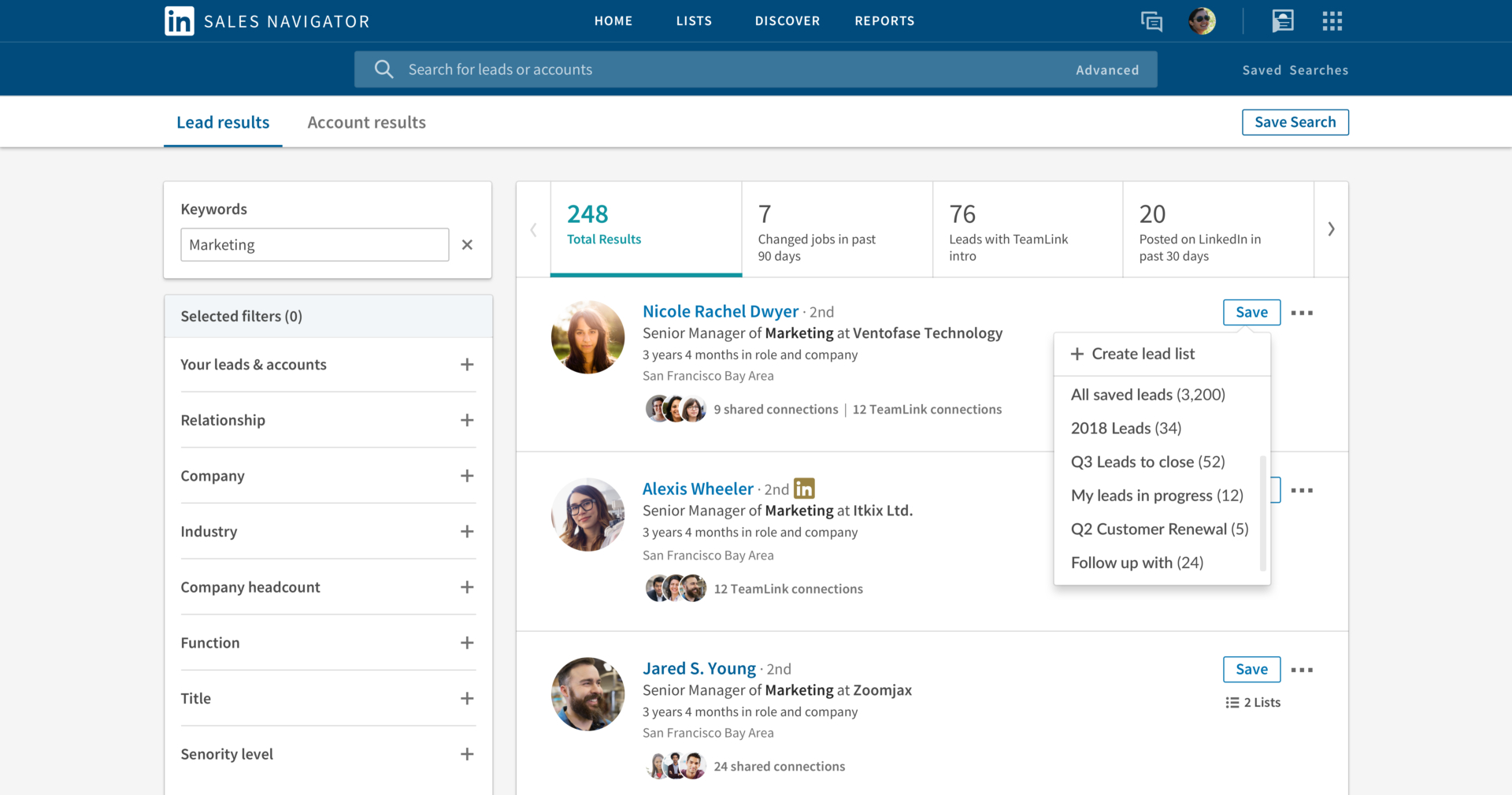
What the Tool is About:
LinkedIn Sales Navigator is a powerful tool designed for sales professionals to find, connect with, and build relationships with prospects on LinkedIn. By tapping into LinkedIn’s expansive network, it offers sophisticated search capabilities and lead recommendations tailored to each user’s specific needs.
How It Helps with Sales Intelligence:
- Advanced Search Filters:
Sales Navigator provides robust search filters that allow users to find prospects based on detailed criteria such as industry, role, company size, and location. This ensures that sales teams can zero in on leads that match their ideal customer profile (ICP), improving targeting and outreach effectiveness. - Lead Recommendations:
The tool continually learns from your sales activities, suggesting new leads that align with the profiles of your most successful prospects. This keeps sales teams supplied with fresh, relevant leads, even as market conditions and company priorities shift. - Real-Time Insights:
LinkedIn Sales Navigator alerts users to key updates like job changes, company news, and shared content. These insights allow sales teams to stay informed about their prospects, giving them the context needed to initiate timely and relevant conversations.
How It Helps Sales Reps:
- Enhanced Prospecting:
With Sales Navigator, reps can quickly find high-value leads that fit their target criteria, saving them time and effort in the early stages of prospecting. The tool’s data-rich profiles provide a comprehensive view of each lead, so reps can focus on prospects who are more likely to convert. - Personalized Outreach:
Reps benefit from real-time insights into each lead’s activity on LinkedIn, such as posts they engage with or articles they share. This enables reps to tailor their outreach with timely and relevant messages, increasing the likelihood of engagement and positive responses. - Relationship Building:
Sales Navigator helps reps connect with decision-makers and other stakeholders by identifying mutual connections and shared interests. This facilitates a more natural, relationship-driven approach to selling, which can lead to stronger, long-term customer relationships.
2. ZoomInfo

What the Tool is About:
ZoomInfo is a comprehensive sales intelligence platform that aggregates data on millions of companies and professionals. It provides detailed insights, including contact information, intent data, and technographic information, to help sales teams better understand and reach their target audience.
How It Helps with Sales Intelligence:
- Extensive Database:
ZoomInfo’s vast repository includes accurate and up-to-date information on companies and contacts. This makes it easy for sales teams to identify key decision-makers and stakeholders within target organizations. - Intent Data:
By analyzing online behaviors like content downloads and website visits, ZoomInfo can highlight leads that are actively researching products or services similar to yours. This intent data allows sales teams to prioritize prospects who are further along in the buying process. - Technographic Data:
ZoomInfo provides insights into the technology stack of potential clients, allowing sales teams to tailor their approach based on the tools their prospects already use or need.
How It Helps Sales Reps:
- Targeted Outreach:
With access to detailed contact data and firmographics, reps can personalize their communication to better align with each prospect’s role, industry, and company needs. This increases the likelihood of resonating with their audience. - Lead Prioritization:
Intent data helps reps focus on leads that show signs of buying interest, so they can reach out at the right moment. This improves efficiency by focusing their efforts on prospects more likely to convert. - Efficient Prospecting:
ZoomInfo’s search filters and data accuracy allow reps to quickly find and engage with high-quality leads, reducing the time spent on research and enabling faster connections with potential customers.
3. Paperflite
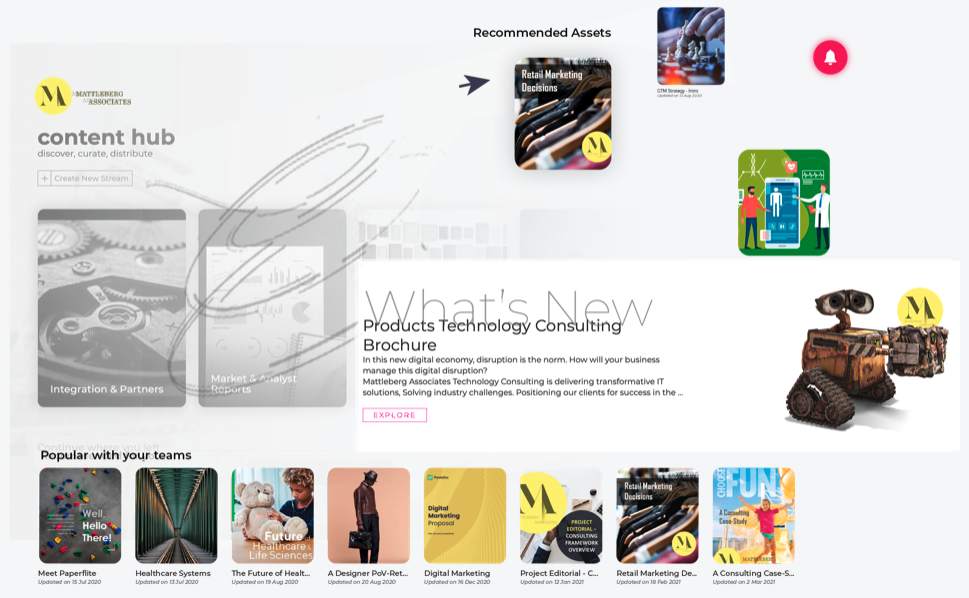
What the Tool is About:
Paperflite is a sales enablement platform designed to streamline content management, distribution, and tracking. It offers content analytics and insights into how prospects engage with shared materials, empowering sales and marketing teams to make data-driven decisions.
How It Helps with Sales Intelligence:
- Content Performance Insights:
Paperflite tracks how prospects interact with content—whether they view, share, or spend time on specific sections. This helps sales teams understand which materials resonate best with prospects and refine content strategies accordingly. - Content Analytics:
Real-time insights provide sales reps with detailed information on how each prospect engages with content, allowing them to tailor follow-ups and outreach based on these interactions. - Centralized Content Hub:
By offering a single platform to store and access content, Paperflite ensures that sales reps can easily find and share relevant materials with prospects, enhancing both efficiency and effectiveness. - Deal Insights: This feature helps predict the likelihood of deal closure and provides insights into which types of content are most effective at each stage of the sales process.
How It Helps Sales Reps:
- Data-Driven Outreach:
By understanding which content has the most impact, reps can make more personalized and timely follow-ups, focusing on the aspects of the product or service that interest each prospect. - Tailored Pitches:
Paperflite’s content engagement insights enable reps to modify their approach based on what resonates with each prospect, resulting in more relevant and compelling pitches. - Increased Efficiency:
With quick access to curated content, reps spend less time searching for materials and more time engaging with prospects, improving the sales cycle’s overall effectiveness.
4. Gong

What the Tool is About:
Gong is a conversation analytics tool that records, transcribes, and analyzes sales calls and meetings using AI. It helps sales teams understand successful communication patterns, identify objections, and receive data-backed coaching insights.
How It Helps with Sales Intelligence:
- Conversation Analytics:
Gong captures and analyzes sales interactions, providing insights into what’s being discussed, how often, and the effectiveness of these conversations. This allows sales teams to understand common themes and areas for improvement. - Trend Identification:
Gong’s AI identifies patterns in successful calls, helping sales teams replicate effective tactics and messaging across the board. - Sales Coaching:
By providing targeted feedback based on real call data, Gong enables personalized coaching, which helps reps refine their approach and improve their performance over time.
How It Helps Sales Reps:
- Improved Communication:
Gong’s insights enable reps to refine their messaging based on real-world interactions, helping them navigate objections and improve rapport with prospects. - Coaching at Scale:
Sales managers can use Gong’s data to provide precise feedback, allowing for consistent improvement across the team. Reps get actionable insights to work on specific skills that can increase their effectiveness. - Enhanced Sales Calls:
Reps can review their own calls to self-assess and identify areas where they could improve or replicate successful tactics, ultimately leading to higher-quality conversations with prospects.
5. Cognism

What the Tool is About:
Cognism is a global B2B sales intelligence platform that offers access to compliant contact data, enriched with firmographic and technographic insights, to help sales teams connect with potential clients more effectively.
How It Helps with Sales Intelligence:
- Global Data Coverage:
Cognism provides access to a broad range of B2B contacts across industries and regions, enabling sales teams to identify and connect with prospects that meet their ICP criteria. - Intent Data:
By identifying prospects who are showing buying intent, Cognism helps sales teams focus on leads that are more likely to be interested in their products or services. - Data Compliance:
Cognism ensures GDPR and CCPA compliance, so sales teams can confidently reach out to prospects knowing their data is handled responsibly.
How It Helps Sales Reps:
- Efficient Prospecting:
Reps can quickly identify and connect with the right leads based on detailed firmographic and intent data, which streamlines the prospecting process and increases the chances of successful outreach. - Enhanced Targeting:
By leveraging intent data, reps can prioritize leads who are actively interested in their offerings, allowing for more focused and productive conversations. - Compliance Assurance:
Reps can engage with prospects knowing that all data is compliant with privacy regulations, reducing the risk of reputational damage or legal issues.
6. Salesforce Sales Cloud
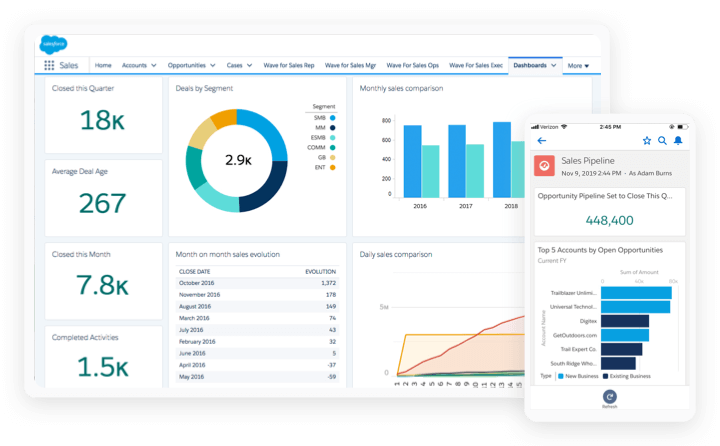
What the Tool is About:
Salesforce Sales Cloud is a leading CRM solution that centralizes customer data and provides a range of tools for managing sales processes. It offers robust analytics and AI-powered insights to support sales teams.
How It Helps with Sales Intelligence:
- Centralized CRM:
Sales Cloud consolidates all customer interactions, enabling sales teams to access a complete view of each customer’s history and engagement with the company. - Analytics and Reporting:
The platform provides detailed performance tracking and analytics, allowing sales teams to understand what’s working and where there’s room for improvement. - AI-Powered Insights:
Salesforce Einstein, the platform’s AI, offers predictive insights and recommendations to help sales teams identify the best next steps for each lead.
How It Helps Sales Reps:
- Unified Data Access:
Reps have easy access to all relevant customer information, enabling them to personalize their outreach based on a comprehensive understanding of each prospect. - Actionable Insights:
Reps receive data-driven guidance on how to move deals forward, improving their decision-making and increasing their chances of success. - Automated Follow-Ups:
By automating repetitive tasks like follow-ups, Sales Cloud frees up reps to focus on high-value activities, helping them close deals faster and more efficiently.
How Sales Intelligence Drives Cross-Functional Synergy in Business
The data gathered through sales intelligence contains valuable insights that can inform and enhance the strategies of other departments. When used correctly, sales intelligence can break down silos, bridge gaps between teams, and align departments toward common objectives.
Let’s explore how this data can create cross-functional synergy within an organization.
- Cross-departmental collaboration thrives when sales intelligence breaks down silos, enabling teams to operate with shared insights and unified goals. When sales intelligence is shared across departments, it fosters a deeper understanding of customer needs and market trends, which each team can leverage for more informed decision-making and strategy alignment.
- For example, if the sales team notices customer demand for a new feature, the product team can prioritize its development. Marketing can then craft targeted campaigns around the updated product, while customer success can proactively inform clients of these enhancements, ensuring that all departments are aligned and contributing to a cohesive growth strategy.
- By leveraging this intelligence, marketing can create highly targeted campaigns that speak directly to the identified needs and behaviors of different customer segments. Meanwhile, customer success teams can identify recurring issues or preferences, allowing them to refine their support strategies to improve customer satisfaction and retention. Development teams can also benefit by using sales intelligence to prioritize features and updates that align with market demands, ensuring the product remains relevant and competitive.
- For example, if sales data shows that a certain demographic is responding particularly well to a specific message, marketing can double down on that angle for future campaigns. Meanwhile, customer success can use the same data to offer tailored onboarding experiences to this demographic, while the development team considers adding features that further cater to this group's preferences.
Doing More with Sales Intelligence: Beyond Traditional Uses
Sales intelligence is often underutilized when it’s confined to the sales department alone. By expanding its use across the business, organizations can unlock new levels of efficiency and strategic alignment. Here are a few additional ways businesses can do more with sales intelligence:
- Strategic Planning: Sales intelligence can play a crucial role in guiding long-term strategic planning. By providing leadership with a clear view of market trends, competitive dynamics, and customer preferences, it enables more informed decision-making. This data-driven approach to strategy helps organizations stay ahead of the curve, anticipating market shifts and making investments that align with future opportunities.
- Pricing Strategies: Sales teams often have unique insights into how customers perceive value and what pricing structures are most appealing. By incorporating this data into pricing strategies, businesses can develop models that maximize revenue while remaining competitive.
- Talent Development: Sales intelligence can also be used to refine training and development programs. By analyzing successful sales behaviors and patterns, businesses can create more effective training programs that help salespeople excel and adapt to changing conditions.
For example, by analyzing top-performing sales reps, you might discover that they tend to use specific messaging that resonates particularly well with a target audience. By identifying these patterns, sales leaders can train other reps to adopt similar approaches, driving overall performance improvements.
Before we go:
Sales intelligence is much more than just a sales tool—it’s a strategic asset that can bring the entire business together. When shared across departments, it enables cross-functional collaboration, creates a continuous feedback loop, and aligns strategies from various departments for maximum impact.
By integrating sales intelligence into every aspect of the business, organizations can create a more cohesive and customer-centric approach to growth.
In a world where data is king, leveraging sales intelligence across the organization is no longer a luxury—it’s a necessity. Companies that will recognize the value of sales intelligence as a company-wide resource and use it to drive alignment, innovation, and sustainable growth, will be the ones that thrive in the ever-evolving business landscape!
To find out more on how sales intelligence may aid your needs, contact us at Paperflite!
